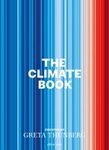![Modeling of Atmospheric Chemistry Modeling of Atmospheric Chemistry]()
Click to have a closer look
About this book
Contents
Customer reviews
Biography
Related titles
About this book
Mathematical modeling of atmospheric composition is a formidable scientific and computational challenge. This comprehensive presentation of the modeling methods used in atmospheric chemistry focuses on both theory and practice, from the fundamental principles behind models, through to their applications in interpreting observations. An encyclopaedic coverage of methods used in atmospheric modeling, including their advantages and disadvantages, makes this a one-stop resource with a large scope. Particular emphasis is given to the mathematical formulation of chemical, radiative, and aerosol processes; advection and turbulent transport; emission and deposition processes; as well as major chapters on model evaluation and inverse modeling. The modeling of atmospheric chemistry is an intrinsically interdisciplinary endeavour, bringing together meteorology, radiative transfer, physical chemistry and biogeochemistry, making the book of value to a broad readership. Introductory chapters and a review of the relevant mathematics make Modeling of Atmospheric Chemistry instantly accessible to graduate students and researchers in the atmospheric sciences.
Contents
Preface
1. The concept of model
2. Atmospheric structure and dynamics
3. Chemical processes in the atmosphere
4. Model equations and numerical approaches
5. Formulation of radiative, chemical, and aerosol rates
6. Numerical methods for chemical systems
7. Numerical methods for advection
8. Parameterization of small-scale processes
9. Surface fluxes
10. Atmospheric observations and model evaluation
11. Inverse modeling for atmospheric chemistry
Appendix A. Physical constants and other data
Appendix B. Units, multiplying prefixes and conversion factors
Appendix C. International reference atmosphere
Appendix D. Chemical mechanism
Appendix E. Brief mathematical review
Further reading
Index
Customer Reviews
Biography
Guy P. Brasseur is a Senior Scientist and former Director at the Max Planck Institute for Meteorology, Hamburg, and a Distinguished Scholar at the National Center for Atmospheric Research in Boulder, Colorado. He received his doctor's degree at the University of Brussels and has conducted research in Belgium, the USA, and Germany. He was Professor at the University of Brussels and the University of Hamburg. His scientific interests include questions related to atmospheric chemistry and air pollution, biogeochemical cycles, climate change and upper atmosphere chemistry and dynamics. He has chaired several international research programmes, and is associated with national Academies in Hamburg, Brussels, and Oslo.
Daniel J. Jacob is the Vasco McCoy Family Professor of Atmospheric Chemistry and Environmental Engineering at Harvard University, Massachusetts. He received his PhD from the California Institute of Technology in 1985 and joined the Harvard University faculty in 1987. His research covers a wide range of topics in atmospheric composition, with focus on model development and applications to interpretation of observations. Among his professional honors are the NASA Distinguished Public Service Medal (2003), the American Geophysical Union Macelwane Medal (1994) and the Packard Fellowship for Science and Engineering (1989). Jacob has published over 350 research papers and trained over 80 PhD students and postdocs in atmospheric chemistry modeling over the course of his career.
By: Guy P Brasseur(Author), Daniel J Jacob(Author)
630 pages, 175 colour & 47 b/w illustrations
"This exceptional volume by two pioneers in the field covers every essential aspect of atmospheric modeling."
– John Seinfeld, California Institute of Technology
"An impressive and comprehensive description of the theoretical underpinning and practical application of atmospheric chemistry modeling. Soon to be a classic reference for graduate students and researchers in the field."
– Colette L. Heald, Massachusetts Institute of Technology
"Brasseur and Jacob, both world leaders in modelling atmospheric chemistry, have written a thoroughly engaging textbook. The breadth and depth of the material covered in the book is impressive, but a major strength of the book is the ability of the authors to present often complex information in an accessible way. I have no doubt that this book will help educate future generations of scientists and be a reference point for researchers worldwide. It will certainly become a well-thumbed volume on my bookshelf."
– Paul Palmer, University of Edinburgh
"This excellent book provides a comprehensive introduction and reference to modeling of atmospheric chemistry from two of the pioneering authorities in the field. From the historical motivations through to modern-day approaches, the atmospheric physical, chemical and radiative components of the model framework are described. What makes this book particularly relevant and timely is the discussion of the methods for integrating observations and models that are at the forefront of current scientific advancement."
– David P. Edwards, National Center for Atmospheric Research


































